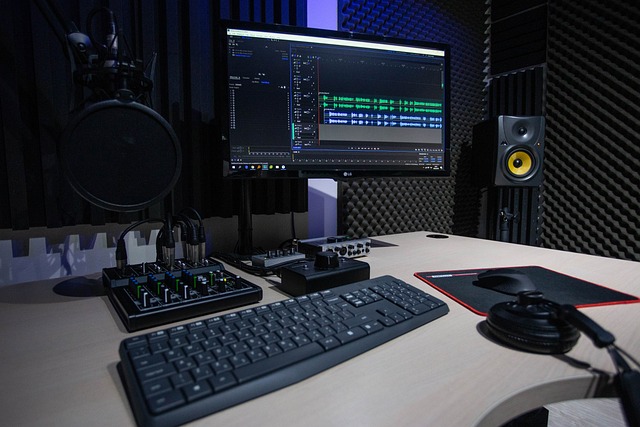Podcasts have become a popular medium for entertainment, education, and storytelling. Indeed, it seems that every celebrity from A-lister to nobody has a podcast these days. With millions of listeners tuning in each day, starting a comedy podcast can be an excellent way to showcase your humor, connect with audiences, and build a loyal following. If you’re a comedian or aspiring funny person looking to launch your own comedy podcast, you’ve come to the right place. In this comprehensive guide, we’ll walk you through the steps to start a successful comedy podcast from scratch. A popular podcast could have you headlining one of the top comedy clubs London has to offer.
Define Your Concept and Format
The first step in starting a comedy podcast is to define your concept and format. Consider what type of comedy you want to focus on—whether it’s sketch comedy, improv, stand-up, or comedic interviews—and how you want to structure your episodes. Will your podcast feature solo monologues, co-hosted banter, guest interviews, or a combination of formats? Take the time to brainstorm ideas and develop a clear vision for your podcast’s content and style. A podcast can really help your act standout.
Choose Your Equipment
Once you’ve defined your concept and format, it’s time to choose your equipment. While you don’t need fancy or expensive gear to start a podcast, investing in quality equipment can improve the overall sound quality of your episodes. At a minimum, you’ll need a microphone, headphones, and recording software.
For microphones, popular options for podcasting include the Blue Yeti, Audio-Technica ATR2100, and Rode NT-USB. Pair your microphone with a pop filter to reduce plosive sounds and a shock mount to minimize vibrations. Additionally, invest in a comfortable pair of headphones for monitoring your audio while recording.
As for recording software, there are many free and paid options available, including Audacity, GarageBand, and Adobe Audition. Experiment with different software programs to find the one that best suits your needs and preferences.
Set Up Your Recording Space
Creating a quiet and acoustically treated recording space is essential for producing high-quality podcast episodes. Choose a quiet room with minimal background noise and distractions, and consider adding soundproofing materials such as acoustic panels or foam to absorb echo and reverberation.
Arrange your recording equipment in a comfortable and ergonomic setup, ensuring that your microphone is positioned at the correct distance from your mouth. Use a pop filter to reduce plosive sounds and a shock mount to minimize vibrations from the microphone stand. Test your recording setup to ensure optimal sound quality before recording your first episode.
Plan Your Content
With your equipment set up and recording space established, it’s time to plan your content. Create an outline or script for each episode, outlining the topics, segments, and jokes you want to cover. Consider incorporating recurring segments, jokes, or characters to give your podcast a consistent and recognizable format.
In addition to planning your content, consider scheduling regular recording sessions to stay on track and maintain consistency with your podcast releases. Whether you record weekly, bi-weekly, or monthly, setting a consistent recording schedule can help you stay organized and ensure a steady flow of new episodes for your audience.
Record and Edit Your Episodes
Once you’ve planned your content, it’s time to hit the record button and start recording your episodes. Follow your outline or script, and let your comedic personality shine through as you record your banter, jokes, and sketches. Be sure to speak clearly and enunciate your words to ensure optimal audio quality.
After recording your episodes, it’s time to edit them to polish the audio and tighten up the pacing. Use your recording software to edit out any mistakes, pauses, or unwanted noises, and add music, sound effects, or jingles to enhance the comedic elements of your podcast. Experiment with different editing techniques to find the style that best suits your podcast’s tone and vibe.
Publish and Promote Your Podcast
With your episodes recorded and edited, it’s time to publish and promote your podcast to the world. Choose a podcast hosting platform such as Podbean, Libsyn, or Anchor to upload and distribute your episodes to major podcast directories such as Apple Podcasts, Spotify, and Google Podcasts.
In addition to publishing your podcast, be sure to promote it on social media, your website, and other online platforms to attract listeners and build a loyal audience. Create eye-catching graphics, teaser clips, and promotional materials to generate excitement and interest in your podcast. Engage with your audience by responding to comments, questions, and feedback, and encourage listeners to subscribe, rate, and review your podcast to help boost its visibility and reach.
Stay Consistent and Evolve
Finally, to ensure the success of your comedy podcast, it’s essential to stay consistent and continue evolving your content over time. Maintain a regular recording schedule and release new episodes on a consistent basis to keep your audience engaged and coming back for more. Experiment with different formats, guests, and topics to keep your podcast fresh and exciting, and don’t be afraid to take risks and try new things.
Above all, have fun and enjoy the process of creating and sharing your comedy podcast with the world. Embrace feedback and learn from your experiences to continually improve and refine your podcast over time. With dedication, creativity, and a good sense of humor, you can start a comedy podcast that entertains, inspires, and delights audiences around the world.

